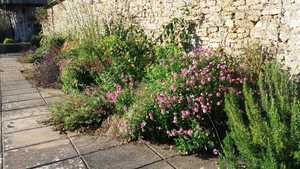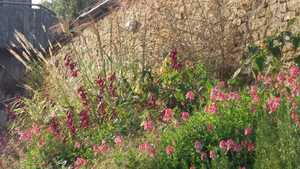Coping With Summer Drought
It won’t have escaped your notice that spring has been very dry. Plants are suffering from a lack of water at the roots and if you are on a water meter you must carefully consider how you are going to make use of such a precious resource and plan your gardening so you scarcely need to use it at all.
Established large plants such as trees and shrubs are mostly ok. They have a greater spread of roots underground than there are branches, twigs and leaves about ground. There is a balance between the plant’s ability to draw water from the ground and the amount of growth attained above ground, and in a dry year, the growth rings of trees will be closer together than in wet years.
Dendrochronology is the science of mapping tree rings from this data and tells us how the moisture has affected tree growth, enabling trees to be dated accurately. Plants can absorb nutrients only in soluble form, and in dry conditions the growth will slow down tremendously.
A really good watering of your potato patch at flowering time will swell your spuds, whereas several light sprinkles will scarcely do more than wet the leaves. Knowing I should water thoroughly, I gave some trays of seedings in plugs three good waterings, then potted them on and was surprised to see that the water had only partially penetrated the compost. Dried out pots and seed trays are best placed in a shallow tray of water to take up the water from below over several hours.
Try an experiment. Fill up a 2 gallon watering can and sprinkle it on to a square metre of vacant soil. Repeat. Go back a few hours later and dig into the soil. You may find that the soil only a couple of inches down is still bone dry.
So…what to do? Firstly, do not water your lawn and set your mower blades two notches higher. A golf course requires up to a million gallons of water a week in dry weather to keep grass green and growing strongly – best not to emulate that on a domestic scale. Grass can go dormant with summer drought or winter cold and will soon green up with warmth and rain. If your lawn was newly turfed or seeded this spring, water you must, and thoroughly, and not in the heat of the day if you can help it. There is no hose pipe ban…yet.
Although plants with leathery and needle like leaves such as lavender, rosemary and grevilleas are adapted to drought resistance by slower water loss from the leaves, they are only happy when they are established with a large root system. A potted specimen from a garden centre placed in a larger pot at home has an artificially reduced rootball / top growth ratio and requires regular watering until established. Once it puts on significant top growth, you can be sure that the root system is healthily expanding and you can reduce the watering.
Oddly enough, the symptoms for over- or under-watering new plants are the same. The plant wilts because the roots are able to draw up water – either because they have drowned or dried out.
Even once established, the potted plant cannot search for water beyond the confines of the pot, nor pick up water from deep under the surface. The pot itself gets hot in sunshine, and most roots prefer a cooler root run. Do not be surprised if your potted rosemary fails after 3 years despite watering and feeding. The garden centres will be very happy if you go and buy a new one. A plant in the ground will always do better than one in a pot, if it is suited to the climate.
If you must have plants in pots, I have found that agapanthus are tolerant of life in pots for several years, their fleshy roots storing water. In shade, an Acer palmatum dissectum has been quite happy in the same pot for 4 years, but now it is shedding twigs. This is a sign of unhappiness – a new larger pot or planting in a border will be the cure. I have had nothing to do with hanging baskets for years, and would certainly never consider any in full sun, unless with automatic feeding and watering systems in place which is ok for the local pub but not for me.
For choosing drought tolerant plants – Google it, and a long list will appear. As a general rule, established plants with a tiny leathery leaf or a waxy blue or hairy silver leaf will be able to survive without much water and most of these prefer full sun. Lavenders, santolina, eucalyptus, artemisia and sedums all fall into the group. A hefty leathery leaf of dark green may tolerate shade as well as drought – laurels, magnolia grandiflora and rhododendrons are classics for this position.
A large soft leaf with a generous area nearly always needs a good water supply to keep the structure supported. Gunneras and skunk cabbage would absolutely hate a hot dry position. There is a commonly grown plant in this category that is so dangerous to life that if you sat underneath it for ten minutes you would die. “Crikey” cry your friends, “We must instantly remove this from our gardens for the sake of the children, whatever is it?”
It’s a waterlily.
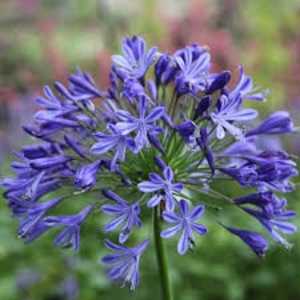
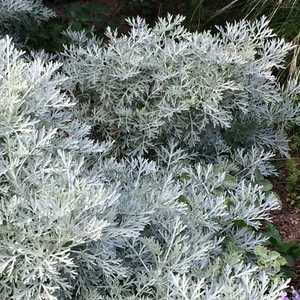
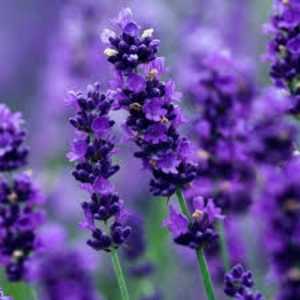
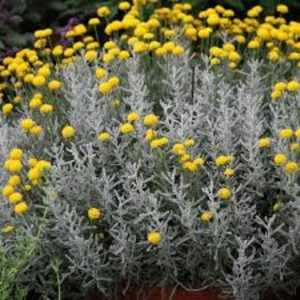
With many thanks to Katherine Crouch
Katherine Crouch Garden Design
Telephone
Mobile
If you would like to contribute a blog, please contact Sitting Spiritually at info@sittingspiritually.co.uk
Posted on June 24th 2019

